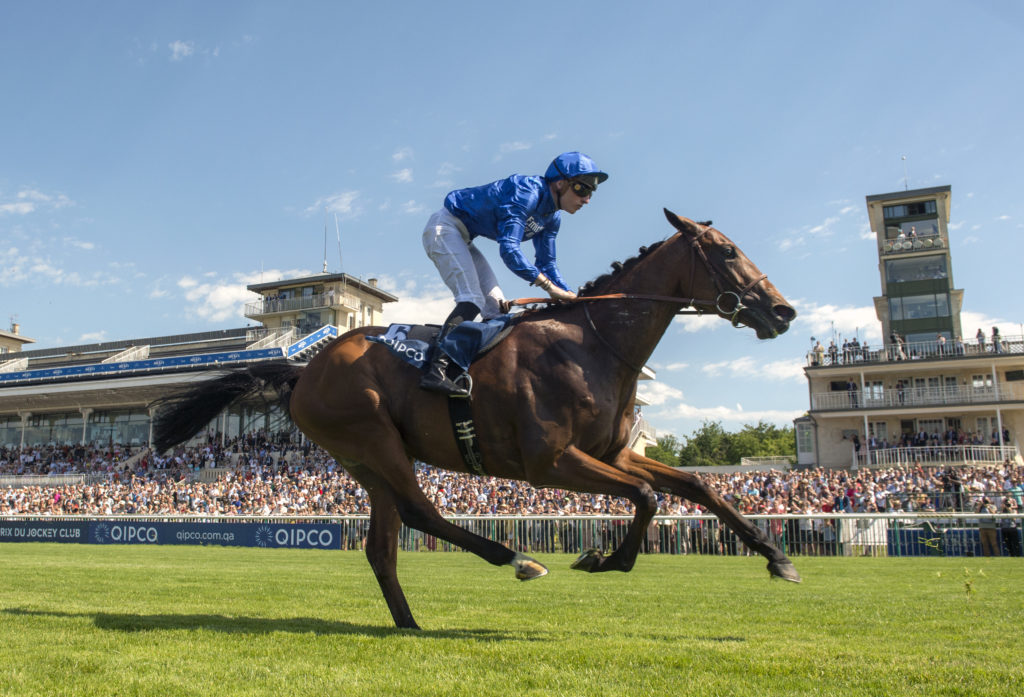When the Wildenstein stock was dispersed at Goffs in the autumn of 2016, it brought the curtain down on an enduring and colourful association between the family and the sport that had spanned nine decades. There were countless champions along the way, notably Allez France, All Along and Peintre Celebre, and at the height of their success, rarely did a year pass by without a Group 1 celebration.
By the time the stock came under the hammer in Kildare, there was a sense that some of the families were tired and certainly not at their brilliant best. Yet for Peter Brant, it marked an opportunity to return to the sport in which he had once exerted such a strong hand and with an outlay of close to €7.5 million under his White Birch banner and through agents Eugenio Colombo and Alan Quartucci, he came away with a significant proportion of the stock. Lurking within the group was his subsequent multiple Grade 1 winner Raging Bull, then a yearling who was one of the cheaper acquisitions at €90,000.
All the while, however, the Wildenstein name wasn’t about to drift into racing history completely. Diane Wildenstein had already tasted success under her own steam as Ballymore Thoroughbreds through the 2014 1,000 Guineas winner Miss France and today, nearly four years on from the dispersal, is at the helm of France’s current star, Persian King.
Appropriately, Sunday’s Prix d’Ispahan winner, in whom Godolphin owns a half share, possesses a background that is peppered by several former Wildenstein champions, notably Pawneese and Peintre Celebre.
“Persian King was the crowning point of an exceptional first crop for Kingman”
The family is also responsible for Bjorn Nielsen’s outstanding stayer Stradivarius.
The first of the champions to carry the Wildenstein silks was Pawneese, bred by Daniel Wildenstein out of his homebred Listed winner Plencia, by Le Haar. Her dam was out of a half-sister to the 1957 King George winner Montaval and in Pawneese, her first foal, Plencia not only produced a filly with the ability to emulate that colt but also one whose Ascot victory ranks as one of the best of that particular era.
Pawneese arrived amid a golden season in 1976 for her trainer Angel Penna and jockey Yves Saint-Martin, who also plundered the 1,000 Guineas with Flying Water and the St Leger with Crow. Pawneese did her bit by winning the Oaks by five lengths ahead of a similarly dominant win in the Prix de Diane; in doing so, she became the first filly since 1864 to sweep both Classics.
Still unbeaten as a three-year-old and regarded as the best filly in France, Pawneese was sent to Ascot for the King George. Her relative Montaval had been an average winner at best 19 years before but Pawneese was anything but, holding on to win by a length from the leading older horse Bruni having dictated throughout.
In beating four other Classic winners that day, Pawneese emerged from the King George as the best middle-distance performer of either sex that summer in Europe. However, she never won again and initially failed to cut much ice at stud as the dam of five minor winners – none of whom gained black-type.

Persian King descends from Petroleuse, a mare who has connections to Wildenstein great Peintre Celebre – Photo: George Selwyn
Yet thanks to several productive daughters, her name lives on. Poughkeepsie, her 1992 filly by Sadler’s Wells, was particularly helpful in that regard as the dam of Listed winners Pretty Tough and Parisienne, herself the granddam of Melbourne Cup hero Protectionist. Another daughter of Poughkeepsie, the Listed-placed Private Life, is the dam of Stradivarius.
Plencia’s success at stud wasn’t confined to Pawneese. Of her six winners overall, four struck at stakes level including her Habitat filly Petroleuse, who won the Listed Blue Seal and Group 3 Princess Elizabeth Stakes during her brief career for Sir Henry Cecil in the early 1980s. A talented daughter of noted broodmare sire Habitat, Petroleuse possessed the attributes to become a valuable addition to the Wildenstein’s broodmare band and in Grade 2 winner Peinture Bleue, she left behind a daughter who would provide her connections with arguably their greatest performer in Peintre Celebre.
The son of Nureyev ranks as one of the best horses handled by Andre Fabre, who sent him out to win the 1997 Prix du Jockey Club and Arc, the latter in devastating style. He later stood at Coolmore where a successful stud career came to be highlighted by Group 1 winners such as Pride, Byword and the Wildenstein’s Vallee Enchantee.
Persian King descends from Petroleuse via her Lear Fan daughter Palmeraie. Although a non-winner, she went on to foal a trio of high-class middle-distance performers in Policy Maker, Pushkin and Place Rouge in addition to Plante Rare, latterly dam of the Wildenstein-bred Prix Ganay winner Planteur – that son of Danehill Dancer was to the fore only last week as the sire of Tapster Stakes winner Trueshan.
“Pawneese arrived amid a golden season in 1976 for her trainer Angel Penna and jockey Yves Saint-Martin”
Planteur’s younger half-sister, Pretty Please, ran just the twice for Mikel Delzangles but she obviously had ability. From the first crop of Dylan Thomas, for whom hopes then ran high at Coolmore, she won her debut for Chantilly and later ran down the field in a Longchamp conditions race after a lengthy absence the following spring.
Persian King is her second foal and followed by an Australia filly, Petite Folie, who has made just one underwhelming start for Fabre so far. Pretty Please remains the sole Group 1-producing daughter of Dylan Thomas to date.
In the aftermath of Sunday’s Prix d’Ispahan, Fabre described Persian King as a horse who had given “heartaches and some headaches”. Indeed, he looked to have the world at his feet when winning last year’s Poule d’Essai des Poulains having had the measure of Magna Grecia and Circus Maximus in the Autumn Stakes at Newmarket the season before.
At that point, Persian King was the crowning point of an exceptional first crop for Kingman but an injury suffered in defeat by Sottsass in the Prix du Jockey Club necessitated a lengthy absence from the track and he looked distinctly rusty when second on his return in the Prix de Montretout in June.
Thankfully, Persian King’s past two starts, when successful in the Prix du Muguet in addition to the Prix d’Ispahan, have shown him in a far better light and he will be hard to beat wherever he turns up next, perhaps in the Prix Jacques les Marois in Deauville. He is already assured a place on the Darley roster once his racing days are over and as the highest-rated son of sire-of-the-moment Kingman from such a powerful Wildenstein family, he will no doubt rank as an extremely popular addition.



